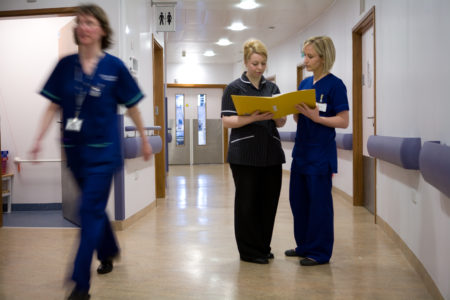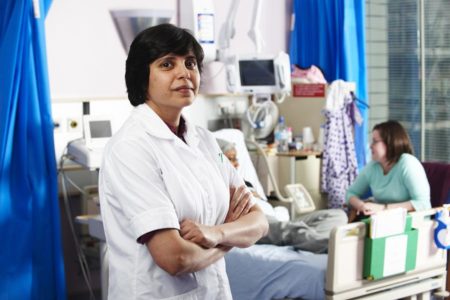Keeping patient flow moving through our hospitals is crucial, but with increased demand and lots of poorly people needing treatment, it has been a real challenge for all areas over the last few weeks. We spent a morning looking at how 10by10, teamwork and with all areas pulling together – which is what ULHT does best – we can all make a real difference to help ease the pressure. 
The best way to start the day is for all wards to have one bed emptied and refilled by 10am. The target is for this to happen 10 times at both Pilgrim and Lincoln, and for five beds at Grantham. When we achieve 10by10 it does make a real difference and helps to get flow moving through our hospitals from the beginning of the day.
From 7.30-8am every morning the ops centres are a hive of activity and it is standing room only as they hold the first bed meeting of the day. They look at which patients are able to go home and try to address any delays in discharge. Every day staff from across the Trust go above and beyond, but it was inspiring to see the ops centre team come into their own and get a comprehensive insight into the current situation at every site within such a short space of time.
This information provides an important insight into the state of each hospital, where we may face pressures during the day and what can be done to try to tackle any problems – the ops team are the people behind the scenes pulling us all together.
It is crucial we do this early as by the time 9am comes around we have ward rounds and it is so much harder to find the time.
Statistics show that when we achieve 10by10 we actually see fewer people being admitted to our wards. This is because if we discharge early in the morning and pull from the admissions list, it is not only better for our patients, but it also enables the team in A&E to have more physical space for new arrivals and more time to assess and treat those in the department and then discharge them. If they are unable to do this there is a greater chance of them having to admit these patients to the wards for further investigations and treatment, so they are able to free up a bed in A&E.
10by10 is such a simple idea that can have a real impact when we get it right.
If we are able to spend a few moments the day before identifying those who will be suitable for discharge, it can make a real difference to the staff on our wards, the team in A&E and our patients as we can get the flow moving nice and early just when we need it to.
By working together we can all make a difference. It is not just about the A&E teams working hard to treat people in their department, we need the whole hospital to be involved in keeping flow moving this winter.
